Top, l-r: Doreen McKenzie-Sanders, the first editor of the Business Quarterly; Sharon Hodgson, Ivey’s latest woman dean and only the second in the School’s history; Ivey’s most recent cohort of Forté Fellows.
Bottom, l-r: The Women in Management (WIM) Conference Executive Team at the inaugural WIM Conference in 2016; Dean Sharon Hodgson and Women in Asset Management (WAM) participants at a celebration at the Toronto Stock Exchange.
Today, a woman dean leads the Ivey Business School, 70 per cent of senior managers and 34 per cent of faculty are women, and most teaching programs are nearing parity. It was not always so.
Like many other industries, business used to be looked upon as a man’s world and Ivey’s makeup reflected that, as did other business schools. But fortunately, the tide is turning.
In recent years, Ivey has taken important steps to create a safe, equitable, and inclusive environment. One example is strategic hiring goals aimed to increase the representation of women and other equity-deserving groups. Another is partnerships with Lean In Canada and the Forté Foundation to provide scholarships to women who have demonstrated exemplary leadership. And there are many examples of resources, such as webinars aimed at prospective students, that share advice from alumni from equity-deserving groups and perspectives on how diversity across all experiences enriches the classroom learning.
Ivey is also making its mark when it comes to creating a more gender-balanced workforce.
Since 2018, the Linamar Scholarship for Women in Engineering and Business has been providing scholarships for up to 10 female students in the HBA and Engineering dual-degree program each year and a guaranteed paid co-op placement. The goal is to support female students aspiring towards engineering and business leadership. The scholarships are thanks to a $5-million gift from Linda Hasenfratz, EMBA ’97 (now Western University’s Chancellor); her husband, Ed Newton; and Linamar founder Frank Hasenfratz.
Most notably, Ivey launched the Women in Asset Management (WAM) program – believed to be the first of its kind in Canada – to train women for the field and close the gender gap in that industry.
“We need more female role models and we need culture change,” said Ivey Dean Sharon Hodgson at an event to celebrate the creation of the WAM.
Under her leadership, the School has set the foundation for a more level playing field. Here’s a look at Ivey’s progression in breaking down barriers for women.
A man’s world
When business education began at Western University in 1922, there weren’t many women in the Canadian workforce. When they had jobs, they were employed as nurses, dressmakers, teachers, housekeepers and shop salespeople. During the First World War, women replaced men who had joined the armed forces, but didn’t receive men’s wages. When the war was over, they were encouraged, and in some cases forced by legislation, to leave the workforce.
It's no wonder, then, that the business education envisioned at Western in the early 20th century saw only one role for women in business: executive secretary.
The women arrive
It wasn’t until 1942 that Margaret Hughes became the first woman to receive a business degree. Others followed, with a total of 23 women graduating in the HBA program by 1960. One woman, Jane Hueber, graduated with an MBA in 1958. Still, as Doreen McKenzie-Sanders, HBA ’65, later remembered: “The School was not welcoming to women when I arrived in 1963. There were no women on faculty … On the rare occasion when a woman would apply for admission, she was referred to the Secretarial Course.” McKenzie-Sanders later became editor of the School’s management magazine, Business Quarterly, and eventually, editor of the School’s official history, Learning to Lead.
Sandy Carson, HBA ’66, recalled applying for admission to the HBA program in 1964.
“The Committee encouraged me to take an alternate route – enrolling in the three-year Secretarial Science program,” she said.
Carson had no intention of becoming an executive secretary, so she appealed the decision and was admitted to the business program. She went on to a successful career in government and health care.
Jack Wettlaufer, who was dean from 1968 to 1978, was conscious of the lack of women in the School’s programs. He wrote a letter to the presidents of Canada’s 150 largest companies, encouraging them to send their female employees to the School’s executive programs. There was little response.
Women’s liberation and the Chilly Climate
By the 1970s, attitudes in Canada were beginning to change. Women organized to demand greater equality in wages and working conditions and more recognition for their role in society. In 1970, the Royal Commission on the Status of Women reported that only 3.9 per cent of managers were women.
By that year, just 72 women had received an HBA at Ivey and 12 had completed the MBA program. In 1973, a noticeably larger crop of 13 women graduated, eight with HBAs and five with MBAs. (It’s worth remembering that Harvard didn’t even accept women into its MBA until 1963!). In Dean Wettlaufer’s graduation address that year, he said, “There will be a dramatic increase of women in the world of management, and it will be welcomed. The complexities of a rapidly changing world need the best qualities of both men and women.”
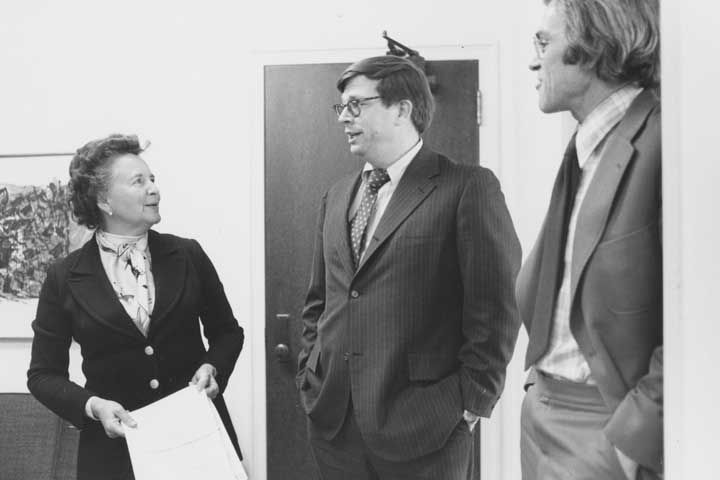
Doreen McKenzie-Sanders
Faculty pioneers
Kathleen Slaughter joined the School in 1983. She wasn’t sure academia was for her, but soon found herself part of a warm and supportive community. There were, of course, some exceptions.
“The first time I went to Tuesday coffee hour, an older faculty member said to me, ‘I can remember when they started letting female students into the program and I thought we’d slipped. Now women are teaching in the program and we’re on a slippery slope,’” she said.
Undeterred, Slaughter became the first woman to serve as a degree program director, executive program director, and associate dean in Hong Kong. As director of the HBA program, Slaughter removed the prerequisites of statistics and economics.
“The focus on numerical-based courses was keeping women out,” she said.
During the tenure of Al Mikalachki, acting dean from 1989 to 1990, gender equity became an issue in the School and the University. The so-called Chilly Climate Report, released in November 1989 and authored by four female professors, documented the ways in which women faculty members were subtly disadvantaged at Western. The Report received extensive media attention. Recalls Slaughter, “It was a tough time at the School because men started walking around on eggshells, afraid to say anything in case they offended us!”
The School undertook its own study of gender equity the same year.
“I didn’t experience the chilly climate myself,” said Slaughter. “But anyone going to teach at Western Business School had to prove themselves. A lot of women struggled, and there were still some senior people who didn’t think women should be there.”
Mary Crossan, MBA ’85, PhD ’91, joined the School faculty to teach business strategy in 1990. Like Slaughter, she found her area group colleagues supportive, although her announcement, shortly after she was hired, that she was pregnant caused some consternation. She took the baby, her daughter, Corey, to the School with her and continued with her research.
Despite being an experienced teacher, Crossan’s teaching evaluations in her first year as a faculty member were disappointing. Although she says she only “scraped by” to achieve tenure, Crossan went on to become an esteemed professor, eventually receiving a Western Distinguished University Professorship award. She too recognizes that other female faculty members faced significant challenges.
“It’s a tough place to be if you’re not performing as well as your male colleagues,” she said.
The School has always benefited from the leadership of female professional staff, Crossan adds.
“When you look at the School from an operations standpoint, you see the strong influence of women who were incredibly competent and committed,” she said.
Adrian Ryans, dean from 1990 to 1995, recognized the value of senior women managers, later noting that, “Giving the women managers and staff in the School a greater leadership role seemed to me a very good way to reduce some of the gender inequities that were perceived to exist.”
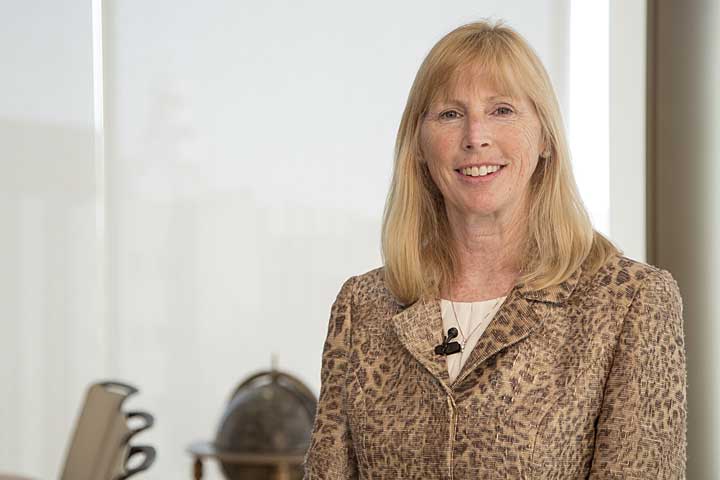
Mary Crossan received the Distinguished University Professorship award from Western University in 2015.
Taking the lead
The arrival of Carol Stephenson in 2003 served as a symbol of how far the School and the business world had come in embracing women in senior roles. During her 10-year tenure, Stephenson led the development of a new strategy for the School, launched the new building project, and helped raise more than $200 million. For many, her warm manner, collaborative style, and dogged determination were a model of female leadership.
Lisa Dymond, MBA ’06, now Chair of the Ivey Alumni Network (IAN), says the default culture of the School was still strongly male when she started in the program.
“It required you as a woman to be deliberate and work hard to have your views heard,” she said.
But her closest friends in the program were all male.
“They were welcoming to me and treated me as one of the gang – and they’re among my closest friends today,” she said.
For Nadine de Gannes, HBA ’09, the Ivey classroom was a challenging environment.
“In my first year, I couldn’t put my hand up with confidence and couldn’t speak without shaking,” she said. “In my second year, I made a deliberate effort to speak up and my grades improved significantly.”
And she is not alone – the data show that male students have consistently scored higher contribution marks compared to their female classmates, and as a result, are more likely to achieve Ivey Scholar status.
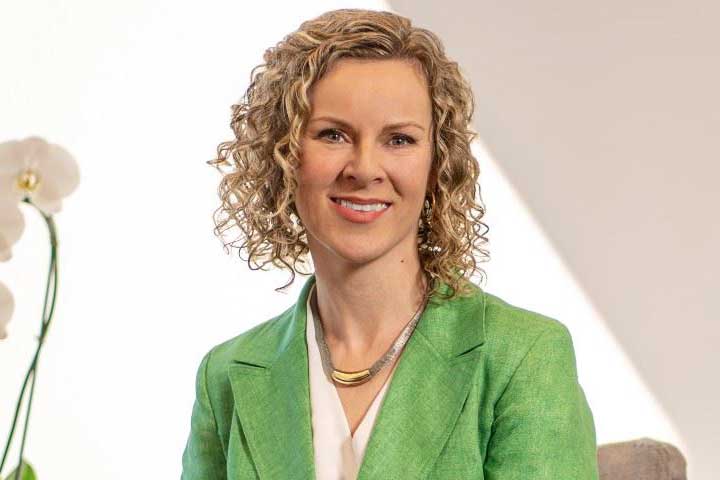
Lisa Dymond is the first woman to lead the Ivey Alumni Network.
Ivey commits to Equity, Diversity, and Inclusion
By the time Sharon Hodgson, Ivey’s second female dean, took office in 2019, 27 per cent of Ivey’s faculty were women, and several student programs were approaching parity. In the context of the #MeToo and Black Lives Matter movements, Hodgson led a powerful effort to foster Equity, Diversity and Inclusion (EDI) at the School.
“Much progress has been made in achieving gender equity, but there is always more to do,” she said “We are committed to continuing this work, ensuring a level playing field for women students, staff, and faculty.”
de Gannes joined the Ivey faculty that same year. At the time no female faculty member had achieved tenure for 10 years.
“A lot has changed,” she said. “It’s the sheer presence of more women, and the sense of solidarity. I’ve been blessed with a community of extraordinary women colleagues.”
de Gannes, who is now the HBA program’s faculty director, also celebrates the contributions of Erin Huner, the School’s Director of Culture and Inclusion.
“Every day Ivey has been better because Erin cares so deeply,” said de Gannes.
Dymond is the first woman to lead the Ivey Alumni Network, although women graduates had already become a major focus of the organization during her predecessor’s term.
“I was sad when I realized I was the first,” she said, “But proud that it was changing.”
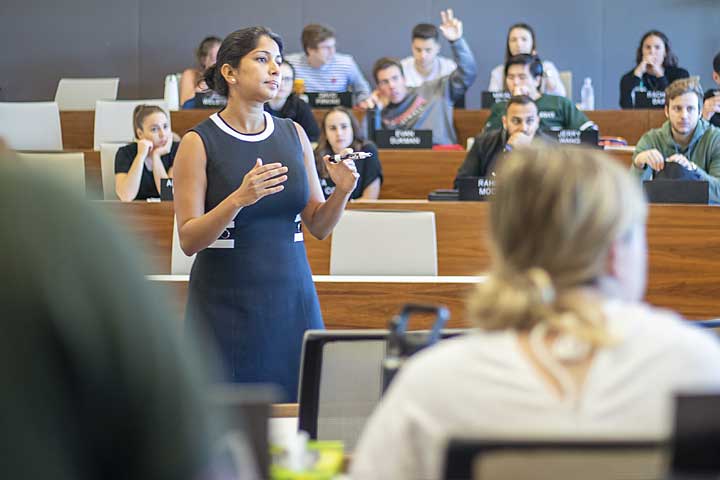
“I’ve been blessed with a community of extraordinary women colleagues.”
– Nadine de Gannes
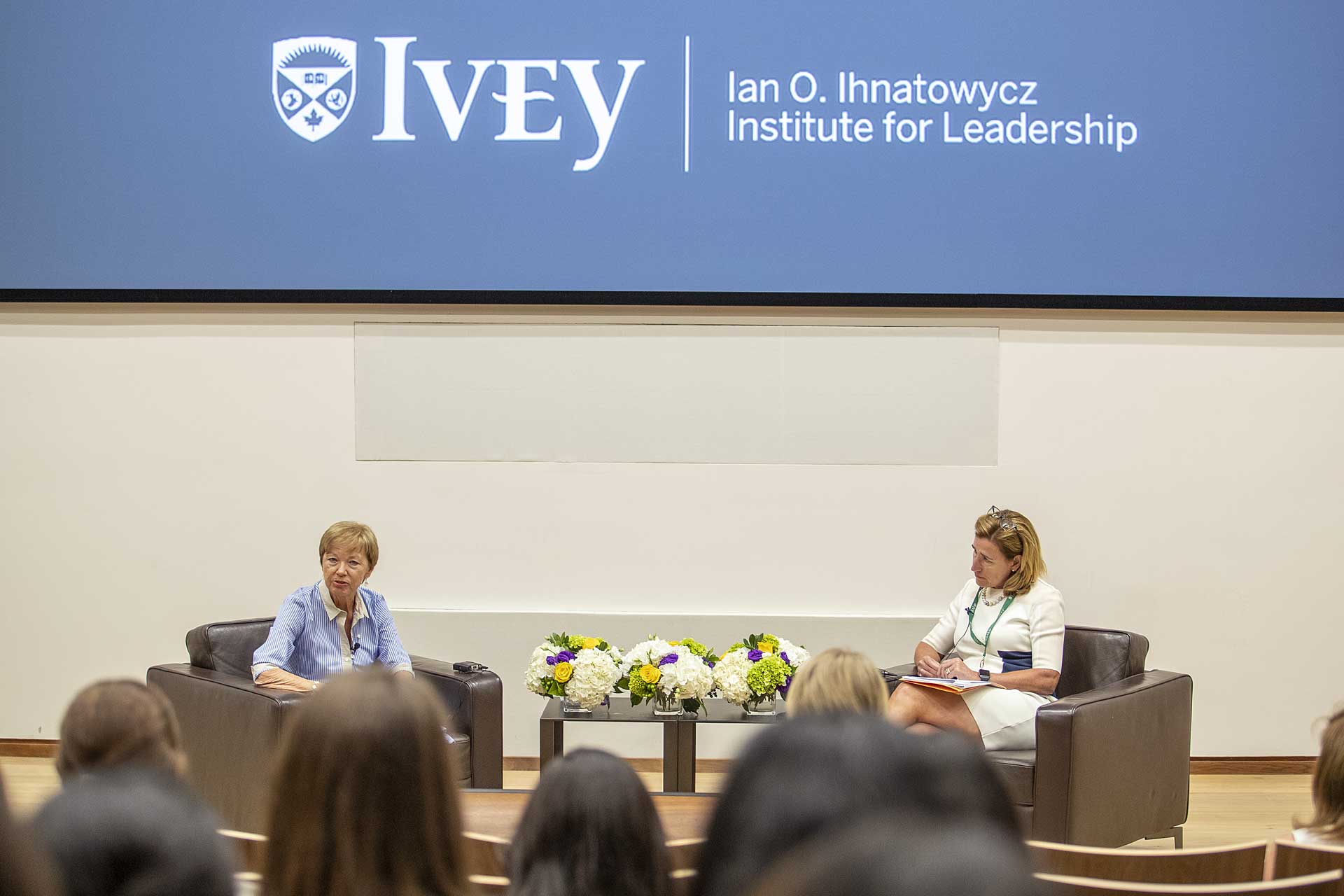
Ivey’s only two women deans, Carol Stephenson (left) and Sharon Hodgson (right) at the launch of the Women’s Leadership and Mentoring Program.
The IAN offers several programs specifically for female alumni, including a coaching program for mid-career women. Just as important, says Dymond, is that all programs and events are planned with a lens of equity and diversity.
Mentorship is provided to Ivey’s MBA women through the LIFT Mentorship Program, which was created by Katie McNamara, MBA ’19, and Yimin Guo and Dimpal Chetnani, both MBA ’20. The program pairs alumni mentors with women in the MBA class for ongoing support.
Current MBA women in turn mentor the incoming cohort through the Pass the Glass initiative. Hosted by the MBA Association’s EDI Committee, the initiative pairs incoming and current students for conversations about navigating the MBA program.
And Ivey’s MBAs can learn from female role models via the Women's Leadership and Mentoring Program (LAMP), which was co-founded by Jana Seijts and Kimberley Young Milani and is offered through the Ian O. Ihnatowycz Institute for Leadership. The LAMP program matches MBA women with successful and influential women in leadership roles in industry for mentorship and networking.
The student-run Women in Management (WIM) Club, established in 2010, runs an annual conference and a series of networking and social activities throughout the year, and provides mentoring for first-year HBA students.
“Our main focus is on empowering and inspiring women,” said Amaal Shaikh, the club’s 2022-2023 co-chair.
Fellow co-chair, Sarah Kosturik, adds, “Our club acts as a safe space for female-identifying students, who may not always feel that their voices are heard in the classroom and need support.”
Keke Zhang is president of the HBA Association in 2022-2023 and says she appreciates the chance to make her mark.
“Historically, business leaders were men so a lot of the traits we associate with being a strong leader are associated with males,” she said. “But my peers have definitely given me a chance to figure out what it means to be a leader.”
Zhang said the Association introduced a new EDI portfolio this year and is working toward gender parity on the council. She said she believes the close relationships formed within Ivey sections foster inclusion.
“The more you get to know your peers, the more you move away from stereotypes and see each other for who you wholly are,” she said. “The classroom becomes a welcoming and supportive space.”
